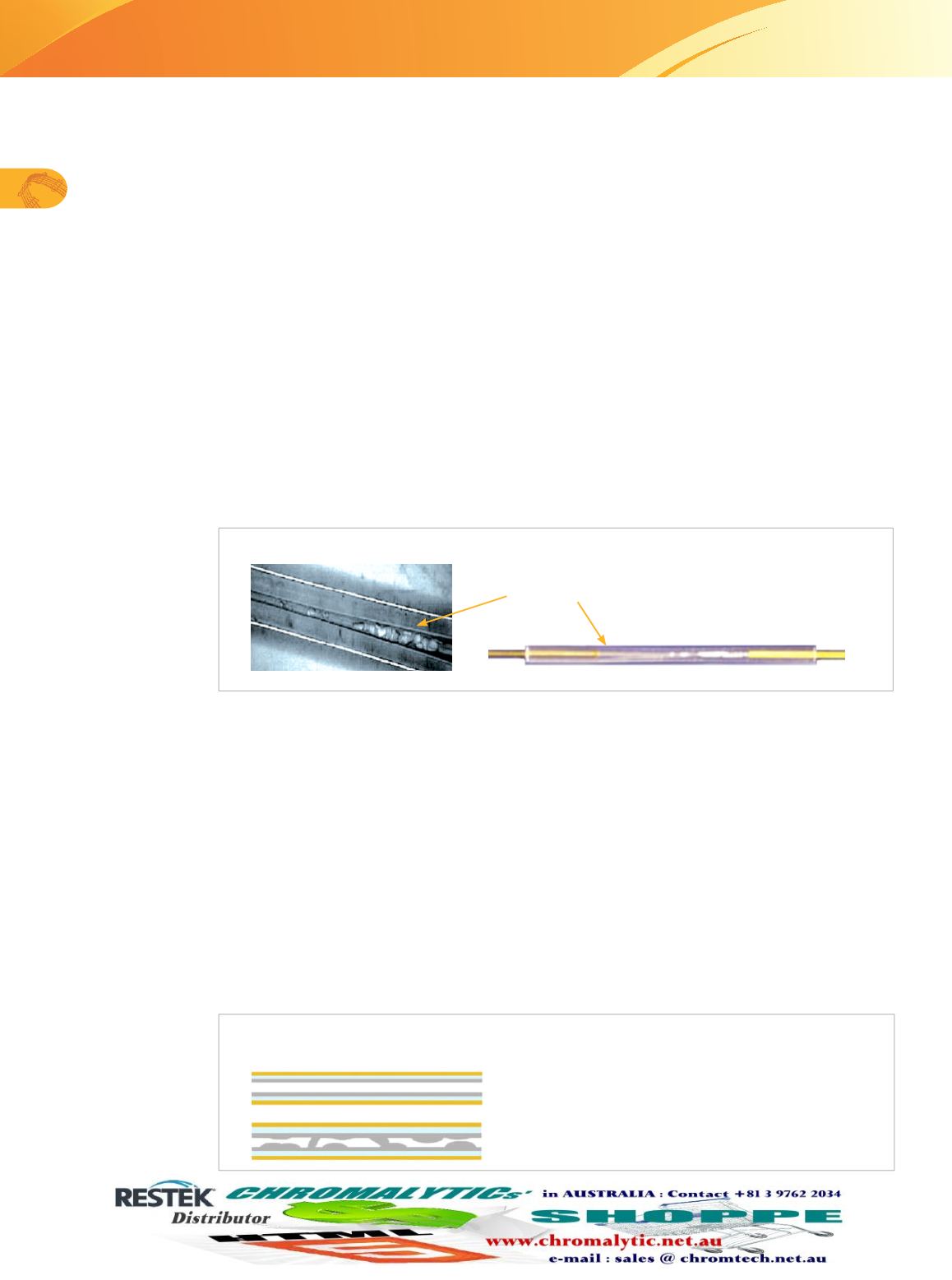

118
www.restek.comGC COLUMNS |
PLOT COLUMNS
PLOT Column Selection
Stable Bonded Porous Layer Open Tubular (PLOT) Column
s
• Stabilized particle layers improve robustness and reproducibility of retention and flow.
• Fully compatible with valve switching and Deans switching systems.
• Highly efficient, reproducible analyses; ideal for permanent gases, solvents, and hydrocarbons.
• Innovative manufacturing procedure reduces particle generation and improves performance of porous
polymer and molecular sieve PLOT columns.
Porous layer open tubular (PLOT) columns are very beneficial for solving application problems, especially for
the analysis of volatile compounds. PLOT columns have a unique selectivity, allowing for the separation of
gaseous compounds at room temperature. Due to the adsorption mechanism of the supports used in PLOT
columns, permanent gases and light hydrocarbons can be resolved at room temperature; columns can then be
programmed to higher temperatures to elute higher boiling compounds.
Traditional PLOT Columns Offer Poor Stability
The traditional PLOT column is built with a 5–50 µm layer of particles adhered to the tubing walls. Because
this layer of particles generally lacks stability, PLOT columns must be used very carefully, as particle release
is common and can cause unpredictable changes in retention time and flow behavior. Traditional PLOT col-
umns also must generally be used in conjunction with particle traps to prevent the contamination of valves,
injectors, and GC detectors. Detectors contaminated with particles typically generate electronic noise, which
shows up chromatographically as a spike in the baseline. In extreme cases, detector flow can be obstructed by
particle buildup. Particles can also affect valves by becoming lodged in the valve and causing leaks or restrict-
ing flow. Figure 1 shows an example of blockage caused by particle accumulation inside a press-fit connector.
Restek® PLOT Columns Offer Improved Stability to Minimize Particle Release
Restek has developed technology and procedures to manufacture PLOT columns with concentric stabilized
adsorption layers. These next generation PLOT columns show a constant flow behavior (permeability) and
have significantly improved mechanical stability, resulting in easier operation, better chromatography, and
reduced particle release. Greater particle stability means more reproducible retention times, virtually no spik-
ing, and longer column lifetimes. This innovative Restek® stabilization chemistry is currently applied to all
fused silica and metal PLOT columns.
Consistent Flow Restriction Factor (F) Guarantees Reproducible Flow
Thick layers of particles are difficult to deposit in a homogeneous layer, and in traditionally manufactured
PLOT columns, this results in variable coating thicknesses. The positions where the layer is thicker act as
restrictions and affect flow (Figure 2). Depending on the number and intensity of these restrictions, traditional
PLOT columns often show greater variation in flow restriction than wall coated open tubular (WCOT) col-
umns. In practice, conventional PLOT columns with the same dimensions can differ in flow by a factor of 4 to
6 when operated at the same nominal pressure. For applications where flow is important, such as with Deans
switching, the nonreproducible flow behavior of most commercially available PLOT columns is a problem.
Figure 1:
Particles released from traditional PLOT columns can cause blockages.
Figure 2:
Inconsistent coating thicknesses result in restrictions that cause significant
variation in flow.
Ideal open path column
PLOT column with restriction
Particles forming a “plug”.


















